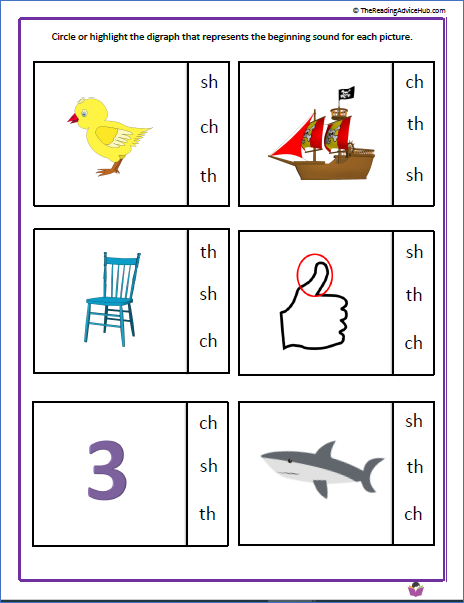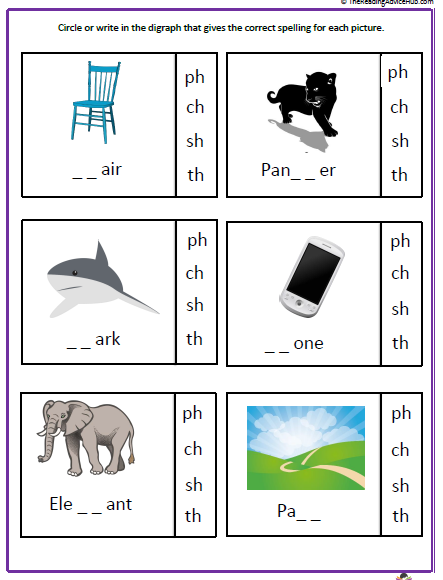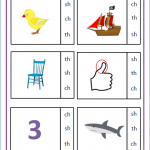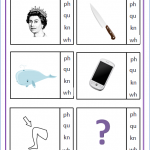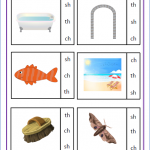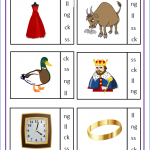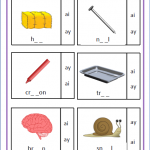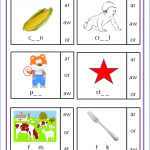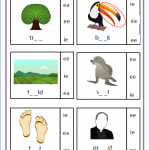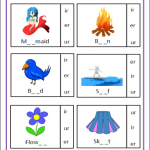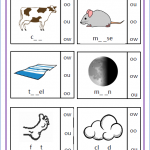Th Digraph Sounds
‘Th’ can represent 2 sounds in words that are similar but not exactly the same.
The most common sound associated with the digraph is found in frequently used words such as thank, thin, and bath. This is represented by the symbol /th/ in popular phonics programmes such as Jolly Phonics and Letters and sounds. The International Phonetic Alphabet (IPA) symbol for this sound is (θ).
If you are teaching students who speak English as a second language, they might have trouble recognising or saying this sound as it isn’t very common in other languages. In fact, even some native English speakers in the UK mispronounce the sound as /f/ in some words. For example, people who speak some regional dialects might say ‘fink’ instead of think.
The Sounds American video below could be useful for students who have difficulty with the sound as it explains how to make the sound very clearly and provides lots of examples:
The other sound represented by ‘th’ is found in words such as this, then, with and the. The symbol for this sound in some phonics programmes is the same as the symbol for the other sound represented by the digraph, but it is printed in bold, /th/, to help distinguish between the two sounds. The International Phonetic Alphabet (IPA) symbol for this sound is (ð).
A key difference between the two sounds represented by this digraph is that this version is said to be voiced whereas the other sound is unvoiced. The voiced version makes the vocal cords vibrate and the other one doesn’t.
You can demonstrate this difference by asking your students to place their hands on their throats in the Adam’s apple region while they say the words thin and this. They should be able to feel the vibration when they say the second word but not the first and the difference in the beginning sound for each word should be clear.
Like the unvoiced version, the (ð) sound isn’t very common in other languages, so it could present difficulties for non-native English speakers. The Sounds American video below is helpful and you can also hear the two sounds on the Oxford Owls Phonics audio guide.
Emma from mmmEnglish gives a good demonstration and explanation of both sounds in this video…
And there’s another good video from a different Emma below:
The Little Learner’s video below is useful to show children how to sound out and blend some simple words containing this digraph. These words are included in phase 3 of the Letters and Sounds phonics programme…
And the video below should also appeal to young children as the popular Mr Thorne teaches Geraldine the giraffe about words with the ‘th’ digraph:
Th Digraph Word List
We’ve split the lists into different sound categories in alphabetical order to help you locate words you might want to use with your students.
Initially, it can help to use words that students are familiar with, but as they get more proficient, it’s good to introduce some new words to expand their vocabulary and refine their decoding skills.
Click on the following link or the images below to download a free printable pdf version of this word list.
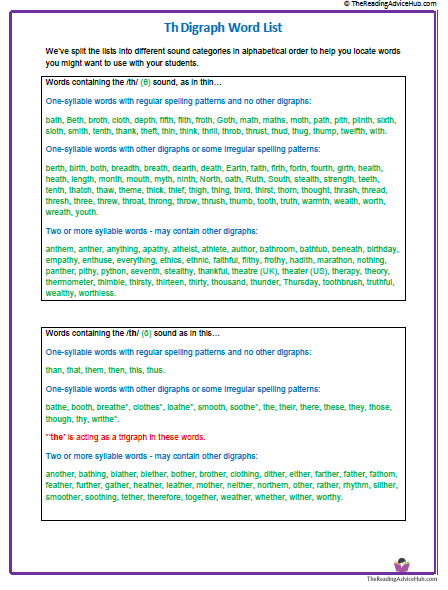 | 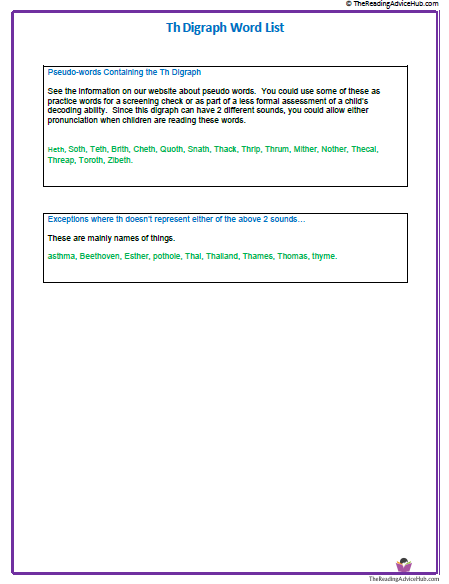 |
Words containing the /th/ (θ) sound, as in thin…
One-syllable words with regular spelling patterns and no other digraphs:
bath, Beth, broth, cloth, depth, fifth, filth, froth, Goth, math, maths, moth, path, pith, plinth, sixth, sloth, smith, tenth, thank, theft, thin, think, thrill, throb, thrust, thud, thug, thump, twelfth, with.
One-syllable words with other digraphs or some irregular spelling patterns:
berth, birth, both, breadth, breath, dearth, death, Earth, faith, firth, forth, fourth, girth, health, heath, length, month, mouth, myth, ninth, North, oath, Ruth, South, stealth, strength, teeth, tenth, thatch, thaw, theme, thick, thief, thigh, thing, third, thirst, thorn, thought, thrash, thread, thresh, three, threw, throat, throng, throw, thrush, thumb, tooth, truth, warmth, wealth, worth, wreath, youth.
Two or more syllable words – may contain other digraphs:
anthem, anther, anything, apathy, atheist, athlete, author, bathroom, bathtub, beneath, birthday, empathy, enthuse, everything, ethics, ethnic, faithful, filthy, frothy, hadith, marathon, nothing, panther, pithy, python, seventh, stealthy, thankful, theatre (UK), theater (US), therapy, theory, thermometer, thimble, thirsty, thirteen, thirty, thousand, thunder, Thursday, toothbrush, truthful, wealthy, worthless.
Words containing the /th/ (ð) sound as in this…
One-syllable words with regular spelling patterns and no other digraphs:
than, that, them, then, this, thus.
One-syllable words with other digraphs or some irregular spelling patterns:
bathe, booth, breathe*, clothes*, loathe*, smooth, soothe*, the, their, there, these, they, those, though, thy, writhe*
*‘the’ is acting as a trigraph in these words.
Two or more syllable words – may contain other digraphs:
another, bathing, blather, blether, bother, brother, clothing, dither, either, farther, father, fathom, feather, further, gather, heather, leather, mother, neither, northern, other, rather, rhythm, slither, smoother, soothing, tether, therefore, together, weather, whether, wither, worthy.
Pseudo-words Containing the Th Digraph
You will notice that we’ve also included pseudo-words in the word list. These are sometimes described as non-words or nonsense words and they’re used in some phonics programmes and in the UK Phonics Screening Check.
These words are designed to assess whether children are capable of decoding words that are unfamiliar to them.
Normally, a pseudo-word will be presented next to an image of a monster or an alien, and the child is told that the word represents the creature’s name. The examples below are from the 2017 phonics screening check.
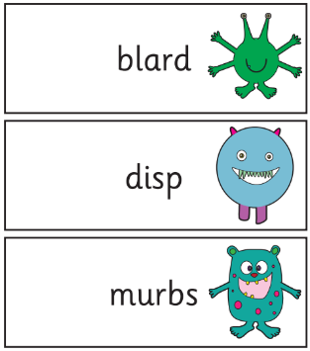
As you can see, some of the pseudo-words contain digraphs and blends, so we’ve included some example pseudo-words below that contain the th digraph. You could use some of these as practice words for a screening check or as part of a less formal assessment of a child’s decoding ability. Since this digraph can have 2 different sounds, you could allow either pronunciation when children are reading these words.
Heth, Soth, Teth, Brith, Cheth, Quoth, Snath, Thack, Thrip, Thrum, Thup, Mither, Nother, Thecal, Threap, Toroth, Zibeth.
Exceptions where th doesn’t represent either of the above 2 sounds…
These are mainly the names of things:
asthma, Beethoven, Esther, pothole, Thai, Thailand, Thames, Thomas, thyme.
Th Digraph Worksheets
We’ve created the following worksheets that you to download for free. Click on the headings or the images below to access these resources.
Children need to decide which pictures represent words that contain the th digraph. They can also try to spell the words. We’ve also created a PowerPoint version of this resource if you want to display it to a class.
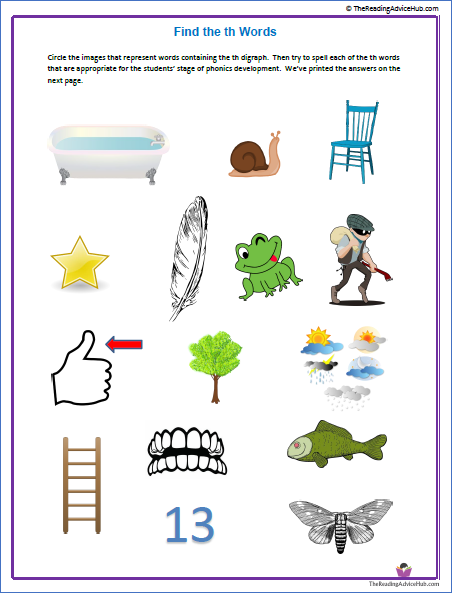
Each of the sentences on the worksheet has a word missing that contains the ‘th’ digraph. Children need to fill in the missing word to complete each sentence. We’ve also created a PowerPoint version of this resource if you want to display it to a class.
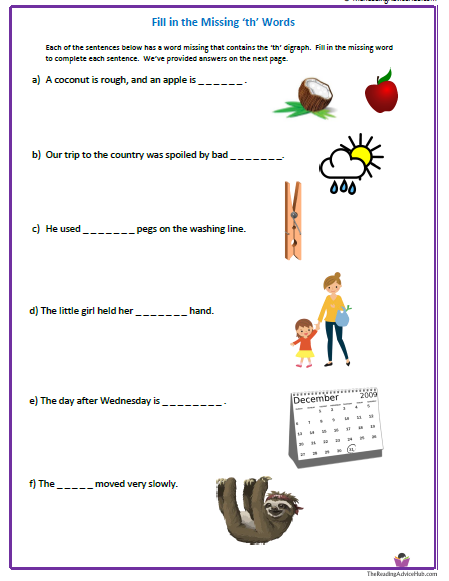
Circle the Initial Digraph th, ch, sh
Circle or highlight the digraph that represents the beginning sound for each picture.
Circle the Correct Digraph th, ch, ph, sh
Children have to choose the correct digraph to complete the spelling of each word.
Th Digraph Phonics Games Online
The spellzone website has some free games using words containing the th digraph. They also have a variety of other games that require you to sign up and pay a subscription, but they do offer a free trial.
Click on the following links for the spellzone games:
The Spellingframe website also has a variety of activities for practising spelling th words. Like the spellzone website, you have to sign up and pay a subscription to access all of the games.
Other Free Digraph Resources
A variety of free worksheets and other resources for a number of common digraphs.
